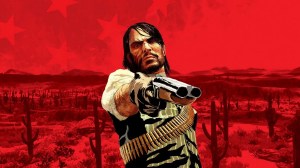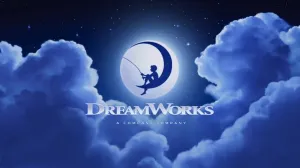Jurassic Park is a phenomenon and a sci-fi classic. It captured the hearts of fans not just with three films by the legendary Steven Spielberg, but also with it sequel trilogy, the Jurassic World saga. Now, a new film is set to premiere in July, continuing the epic story of dinosaurs brought back to life. However, even though this new installment has generated a lot of excitement, the path leading up to it has been somewhat shaky, due in part to the Jurassic World movies starring Chris Pratt and Bryce Dallas Howard, which didn’t quite work for longtime fans. The main reason? The storyline felt like it had strayed too far from its roots, and everything built up since the ’90s seemed to be overlooked or abandoned.
Videos by ComicBook.com
There was even an attempt to shift the focus from dinosaurs to another element – like BioSyn’s genetically modified locusts – that didn’t exactly resonate. The first Jurassic World received a fairly positive response, suggesting that it could center on modified DNA and the corruption and ambition behind InGen’s efforts to bring dinosaurs back to life. Still, for many viewers, from the very beginning, hybrid dinosaurs like the Indominus rex came across as excessive. In fact, Jurassic World appeared to mark a new commercial era, clearly aimed at a mainstream audience. But in doing so, it strayed from the tone that made Jurassic Park unique, and the story seemed to lose some of its essence.

However, a brief line of dialogue from Jurassic Park III might actually change all of that (as strange as it sounds). There’s no confirmation that the Jurassic World films intentionally built their narrative around this one moment, but it’s an interesting connection – and it may offer a key to understanding the transition from the original trilogy to the newer films. Somehow, it ties things together in a surprisingly coherent way, making the new saga feel less disconnected from the films that came before it.
In Jurassic Park III, there’s a short exchange during a tense moment between Dr. Alan Grant (Sam Neill) and his assistant Billy Brennan (Alessandro Nivola). After landing on Isla Sorna and encountering the Spinosaurus, Billy points out that this specific dinosaur wasn’t included on InGen’s official list of cloned species. Grant’s reply is brief but meaningful: “That’s because it wasn’t on their list, and it makes you wonder what else they were up to.” Jurassic Park never really explored the idea of the true behind-the-scenes genetic manipulation, and audiences only started to grasp this in the first Jurassic World. But what once seemed like a random line, now unexpectedly aligns with the modern storyline.
[RELATED: The Original Jurassic Park 4 Script Sounds Nuts (Would It Have Been Better Than Jurassic World?)]
What makes this even more intriguing is how it connects to the upcoming Jurassic World: Rebirth. The Spinosaurus suggests that the park (and the science behind it) had already crossed ethical and transparent boundaries long before, so this storyline wasn’t created specifically for Jurassic World. But if InGen was able to conceal something so significant like that, what else might they have hidden? In the new sequel, we’re set to encounter creatures that are exotic, enormous, and downright terrifying – lab-created species deemed too dangerous for public exhibition.

Looking at the franchise from this perspective, it starts to resemble a progression of ambition. What began as a dream to recreate nature turned into a pursuit of control, spectacle, and manipulation. The Spinosaurus served as the first warning – a stronger and more unpredictable dinosaur. The Indominus Rex represented the next stage. Dr. Wu (BD Wong), who appears in both trilogies, supports this idea – he has always appeared to know more than he let on.
What’s remarkable is that all of this stems from a single line that, at first, seems insignificant. But that’s the beauty of Jurassic Park‘s storytelling – details matter. And this particular moment helps elevate Jurassic Park III, often overlooked, into an essential chapter for understanding the evolution of the franchise. Perhaps the writers of Jurassic World didn’t directly base their narrative on this line (which is very likely), but its presence offers a strong narrative bridge between the two trilogies.
In the end, this one line may reshape how audiences view the films. It clearly suggests – not just subtly – that the monsters in Jurassic World are not random anomalies, and that this was known all along. They are the result of secrets, ambition, and choices made long before the park reopened. In short, Jurassic World doesn’t come from nowhere. One line, one idea – and suddenly, it all makes sense.
You can stream the first three Jurassic Park movies on Hulu, and watch Jurassic World on Prime Video.








